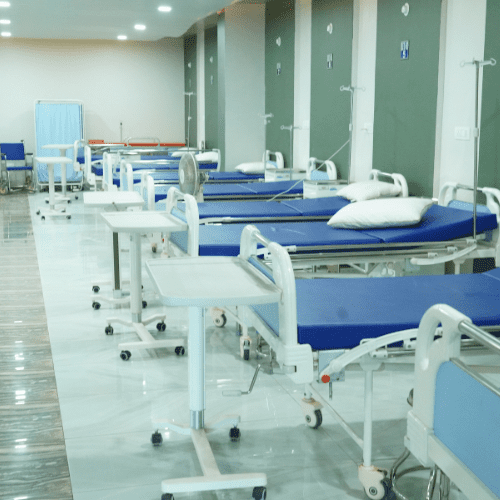The healthcare landscape in India has undergone significant transformations in recent years, particularly within government hospitals. The adoption of Robotic Process Automation (RPA) is one such change, aimed at enhancing administrative efficiency and improving patient care. RPA is revolutionizing how tasks are performed, from managing patient records to streamlining billing processes, allowing healthcare professionals to focus more on patient-centric activities. This article delves into the implications of RPA in Indian government hospitals, exploring its benefits and the challenges it addresses.
Revolutionizing Healthcare: RPA in Indian Government Hospitals
The integration of RPA into government hospitals marks a pivotal shift in how healthcare services are delivered. Traditional hospital processes are often bogged down by cumbersome paperwork and repetitive tasks, which can lead to delays and inefficiencies. RPA automates these processes by mimicking human actions, allowing systems to handle mundane tasks like data entry, appointment scheduling, and insurance verification with unprecedented speed and accuracy. This significantly reduces the administrative burden on healthcare staff, enabling them to devote more time to patient care.
Moreover, RPA enhances the accuracy of data handling in hospitals. Mistakes in data entry can lead to serious repercussions, including incorrect treatment plans and billing issues. By employing RPA, government hospitals can minimize human error, ensuring that patient records and administrative details are accurate and up to date. This level of precision is particularly important in public healthcare facilities where the volume of patients is high, and the stakes are even higher. Consequently, RPA not only streamlines operations but also contributes to better patient outcomes.
Furthermore, the implementation of RPA aligns with the broader goals of digital transformation in Indian healthcare. The National Health Mission and various state initiatives emphasize the need for modernized healthcare systems that can cater to growing populations efficiently. The ability of RPA to integrate seamlessly with existing systems allows hospitals to upgrade their services without overhauling their entire infrastructure. This strategic adoption not only elevates operational standards but also positions government hospitals as frontrunners in the nation’s digital healthcare revolution.
Enhancing Efficiency: The Rise of Robotics in Healthcare
As RPA tools continue to gain traction in Indian government hospitals, the focus on enhancing operational efficiency is more pronounced than ever. Automation allows hospitals to streamline processes such as inventory management and patient admissions, drastically reducing wait times and enhancing overall service delivery. For instance, automated systems can instantly update medication inventories, alerting staff to low stock levels and ensuring that essential supplies are always available. Such efficiencies are crucial in a system that must cater to millions of patients daily.
In addition to process efficiency, RPA is also proving to be a cost-saving measure for government hospitals. By automating labor-intensive tasks, hospitals can reduce reliance on human resources for repetitive duties, which often require extensive training and ongoing management. The financial resources saved can be redirected toward improving patient services, investing in advanced medical technology, or expanding healthcare access to underserved communities. This positive ripple effect reinforces the potential of RPA to not only improve operational metrics but also enhance the quality of care provided to patients.
However, the adoption of RPA is not without its challenges. Concerns regarding data privacy and security remain at the forefront as hospitals handle sensitive patient information. Ensuring that these automated systems comply with regulatory frameworks and maintain the integrity of patient data is essential. Additionally, there is a need for ongoing training and support for healthcare staff to adapt to this technological shift. Addressing these challenges is crucial for sustained success in implementing RPA, but the prospects for a more efficient, patient-centric healthcare system in India are promising.
The integration of Robotic Process Automation in Indian government hospitals is a testament to the evolving landscape of healthcare. By streamlining operations, enhancing data accuracy, and improving patient care, RPA is setting the stage for a revolution in how healthcare services are delivered. While challenges remain, the potential benefits of adopting this technology are undeniable. As India continues to modernize its healthcare infrastructure, RPA will play a pivotal role in ensuring that government hospitals not only meet current demands but also pave the way for future advancements in health services. The journey has just begun, but the future of healthcare in India is undoubtedly brighter with RPA leading the way.


